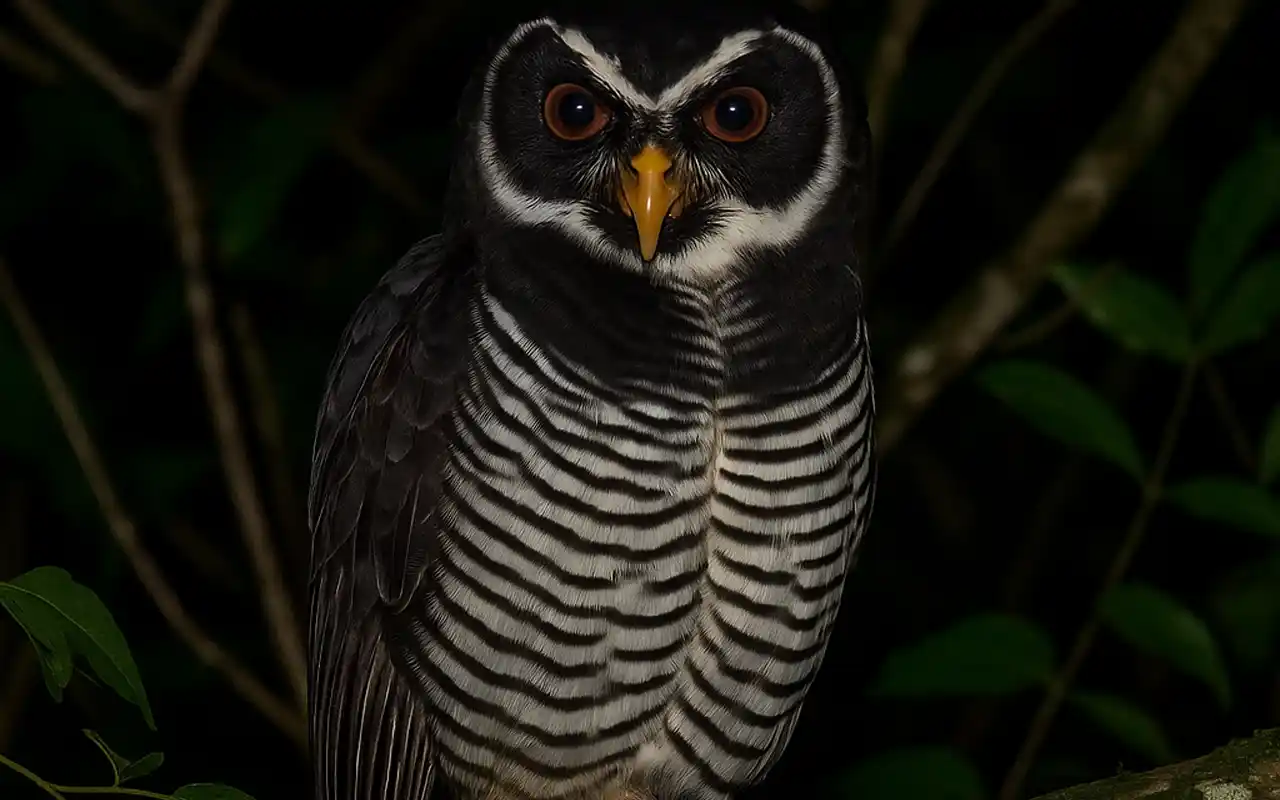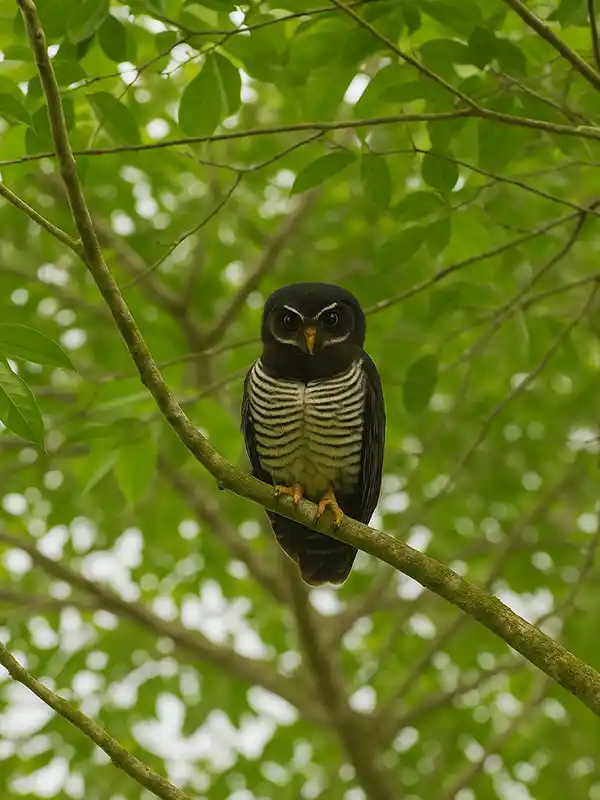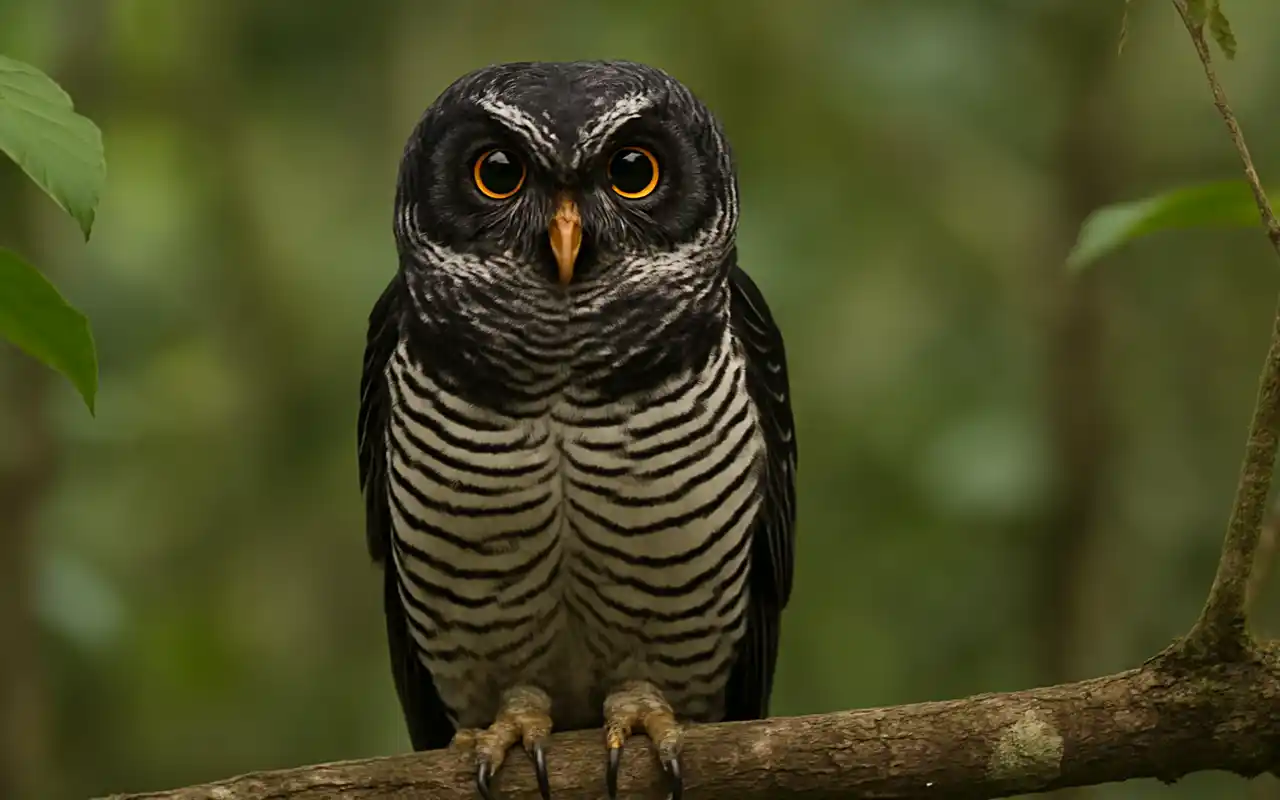06 Aug The Enigmatic Black-and-white Owl in the Caño Negro Wetlands

The Enigmatic Black-and-white Owl in the Caño Negro Wetlands
Hidden beneath the canopy of one of Costa Rica’s most remote wetlands lives a rarely seen creature of the night: the Black-and-white Owl (Strix nigrolineata). With its intense gaze, bold plumage, and haunting call, this owl has become a sought-after sighting for birders and nature lovers exploring the lush forests around Caño Negro.
A Quick Profile of the Black-and-white Owl
This medium-sized owl—measuring around 35–40 cm—features striking horizontal black-and-white barring on its chest and belly, a dark facial disk framed by bright “eyebrow” lines, and reddish-brown eyes. Unlike many owls, it prefers semi-open areas with tall trees near water, making Caño Negro Wildlife Refuge a perfect home.
Though mostly active at night, it can sometimes be spotted perched quietly near roosting trees at dawn or dusk.
Mating Rituals in the Treetops
The mating season of the Black-and-white Owl generally begins in March, with the onset of the dry season. Males attract females with vocalizations and displays that may include short flights, wing flutters, and duet calling. Once paired, they select high perches among dense foliage or epiphyte-covered branches to build their nests.
– Nesting: Nests are not built in cavities, but among leafy platforms or bromeliads in the treetops.
– Eggs: One or two dull white eggs are laid, typically in March or April.
– Roles: The female incubates while the male hunts and protects the nesting area.
– Hatching: Chicks emerge after about a month and are ready to fledge by late April or May.
When and How to Spot One
If seeing this stunning owl is on your birdwatching bucket list, here are the best times and tips to maximize your chances:
– Best Season: March to May, during the dry season and breeding months, when owls are most vocal and active.
– Best Time of Day: After sunset and before sunrise—these owls are strictly nocturnal.
– Habitat to Explore: Focus on the taller trees at the edges of the lagoon or near the trails surrounding the village of Caño Negro.
– Guided Night Tours: Joining a local guide on a night boat or walking tour can significantly improve your chances.
What to Listen For
Their call is unmistakable: a series of deep hoots followed by shorter notes in rhythmic patterns. During the breeding season, duets between males and females may be heard echoing through the trees—a magical experience in the quiet wetlands of Caño Negro.
Why Caño Negro is a Unique Spot
Unlike other regions of Costa Rica, Caño Negro offers a rare blend of flooded forest, gallery woodland, and seasonal lagoon, making it a haven for both aquatic and arboreal species. The relative isolation and minimal light pollution also provide excellent conditions for observing nocturnal species like the Black-and-white Owl.
While some birds can be seen across various parts of the country, this owl is especially reliable in Caño Negro, where its presence has been noted for years by experienced birders.
The Black-and-white Owl is a mysterious ambassador of Caño Negro’s nocturnal life. Its courtship rituals, careful nesting in the canopy, and haunting calls make it a thrilling encounter for any visitor. Plan your trip during the March–May window, bring a good flashlight (or better yet, a local guide), and keep your ears open—you just might meet this elegant night hunter under the stars.
Ready for Your Caño Negro Adventure?
👉 Book your escape to Caño Negro Natural Lodge: https://canonegrolodge.com/





Sorry, the comment form is closed at this time.